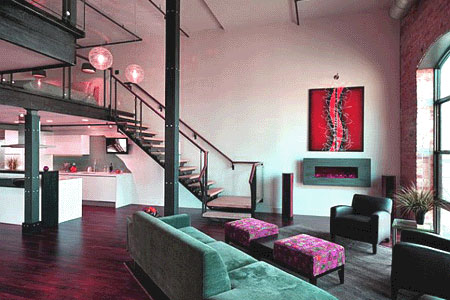
Loft staging is a niche specialty of apartment staging, which deals in former industrial or commercial units which have been converted into full residential use. Lofts present unique challenges and rewards for home stagers, since their layout and appeal is so unique. Although lofts are generally an urban style of real estate, they can be found anywhere and may truly provide once-in-a-lifetime residential opportunities for a wide range of prospective buyers when staged properly.
This guide helps real estate sellers to properly enhance any loft apartment space prior to sale.
Why Perform Loft Staging?
Lofts are converted factory, warehouse or retail locations, which are now used exclusively for living space. Lofts come in many sizes and layouts, although the typical design consists of an entire floor of open space, without any interior walls. Some lofts may be subdivided into smaller units and some may already have interior walls, stairs, and secondary floors built in. Many lofts have very high ceilings, with 14, 20 or even 30 feet not uncommon.
The openness of a loft space makes it difficult for sellers to utilize the space effectively in many instances, making loft property staging a job best left for professional home stagers. When staged perfectly, the full impact of a loft is unlike any other form of real estate and can even charm buyers who were originally looking for a more defined and traditional living space.
Home Staging Techniques for Lofts
Loft home staging should take advantage of all the aspects of the property which make it special. Some of these unique selling features of a loft space might include high ceilings, an open floor plan, a scenic view, large floor to ceiling windows and the possibility of multiple level living spaces.
The main living area of a loft should be staged much like a great room, with the living room, dining room and kitchen often combined into one expansive space.
Bathrooms should be placed logically, if at all possible, with guest baths easily accessible from the main living quarters and the master bathroom tucked away in a more private part of the unit.
Bedrooms should be staged as privately as possible and separated with walls, fabrics, shoji screens or other dividers.
Lofts should be kept particularly open and airy in their design, to maximize the visual impact of the massive space. The use of open space is crucial in loft home staging, so do not feel that you have to add too much furniture, art or accessories to truly finish the unit.
Loft Staging Advice
I love to stage lofts. They are truly some of my favorite properties to plan and execute. I must confess that I have always wanted to own an industrial loft and truly make it a marvel of opulent living space. In the meantime, I get great joy from helping clients set up their lofts to sell for top dollar, even in tough markets and lean economic times.
Buyers know that ideal loft spaces may be difficult to find and competition for the best of these properties can be fierce. For a seller, this is good news, but it still does not make staging a luxury investment. In fact, since the value of the property may already be high, a moderate investment in home staging can increase the final selling price by as much as 15%. This can translate to over $100,000 gained, for as little as $2000 invested.




